In this demonstration, learn how you can rapidly create unified advisor and client profiles with Customer Insights and surface that information inside of applications such as Salesforce.
Video: Create Unified Advisor and Client Profiles Using Microsoft Dynamics 365 Customer Insights and Salesforce
Surface client and advisor profiles in key applications

We’re going to start at the back end though and show you how rapidly you can create a unified profile from many different sources that you have inside your organization.
Let’s start with importing some data sources. In this case, we’re going to import some data from our call center.
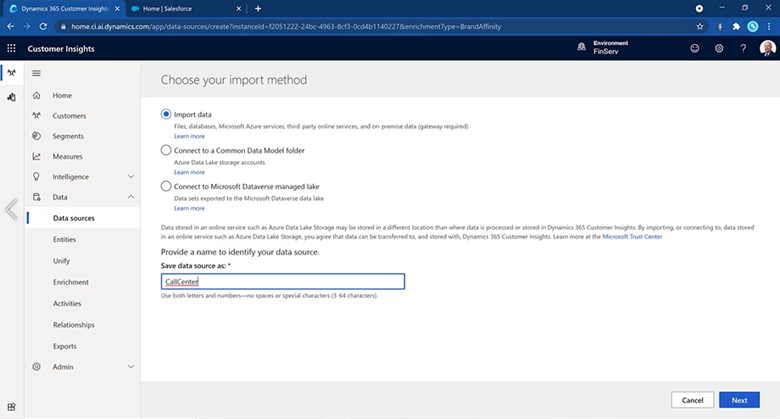
It’s very easy, and it’s all point and click when building these profiles can take days or weeks when compared to traditional approaches of what you typically have to do is:
- have specialized resources,
- build a data warehouse,
- merge the data from multiple sources,
- combine the data, and
- cleanse the data.
Customer Insights is used by business analysts and other nontechnical resources to build these unified profiles.
Typically, when you import and merge multiple data sources, there’s some level of data cleansing require, so I’m going to show you how Customer Insight accomplishes this. So, here you can see I’m importing some basic call center data, and we’re going to clean it up a little bit.
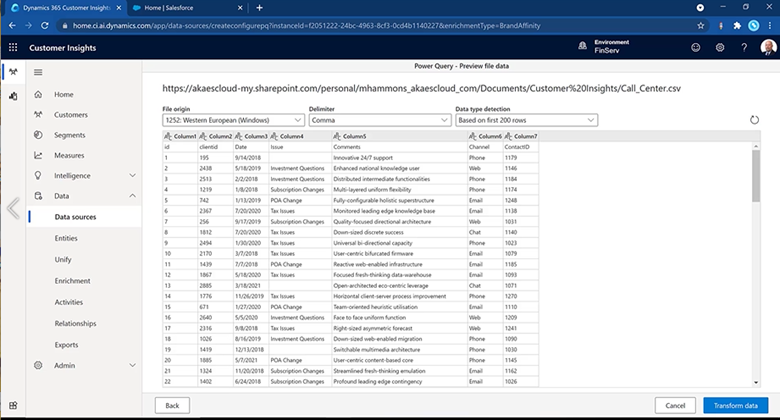
Obviously, I want some column headers in here, so let’s do that. We’re going to transform this and choose first row as column headers.
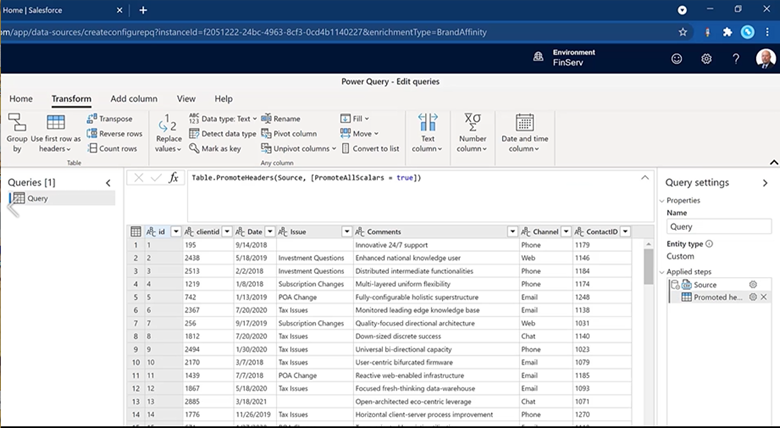
Next, we see there’s a date column, so we can transform it from a text column to a date column.
If we need to, we could continue to do additional cleansing and transformations, but we can see that we have some ID fields here, right, some issues and comments, as well as what channel a call came from.
At this point, the rest of the columns and data look good.
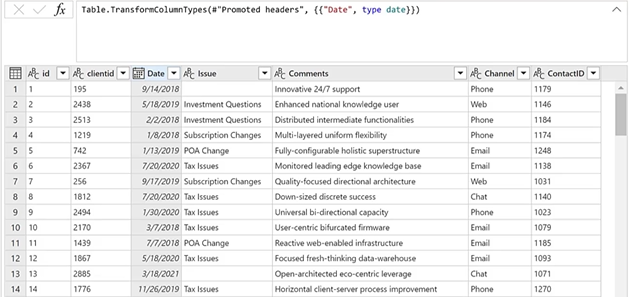
We’re going to name this query call center, so that we can easily identify the source of the data. Here’s where we can select how often we want the data refreshed from the sort.
We can choose manually or we can also choose all the way up to near real time. For now, we’re going to just leave this as manual, click save.
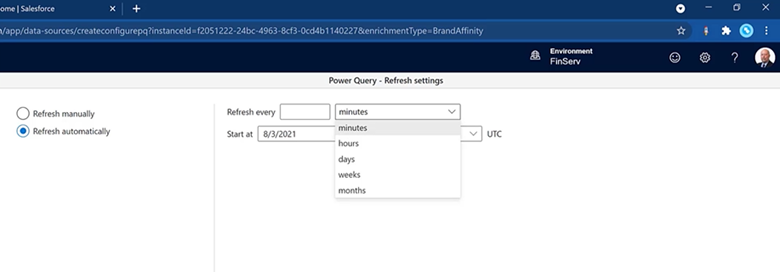
Customer Insights is now importing that data and making it available with the other data sources and information that we previously imported. Here we can see that combined view of the unified advisor and client profiles.
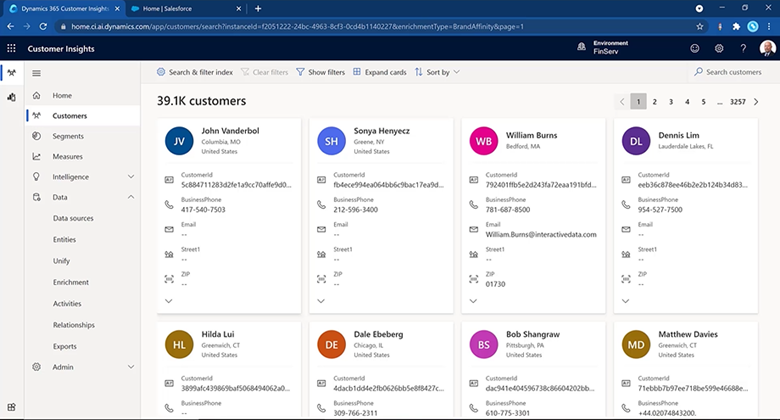
Now that the business analyst is done creating that unified profile, let’s see how we can use Customer Insights connectors to easily export our unified profile to other applications. This is a list of all the prebuilt connectors available to us, and if no prebuilt connector is available, there is an API to provide programmatic integration of our unified profiles.
What we ultimately want is to surface this valuable data and information inside the applications our end users access day to day.
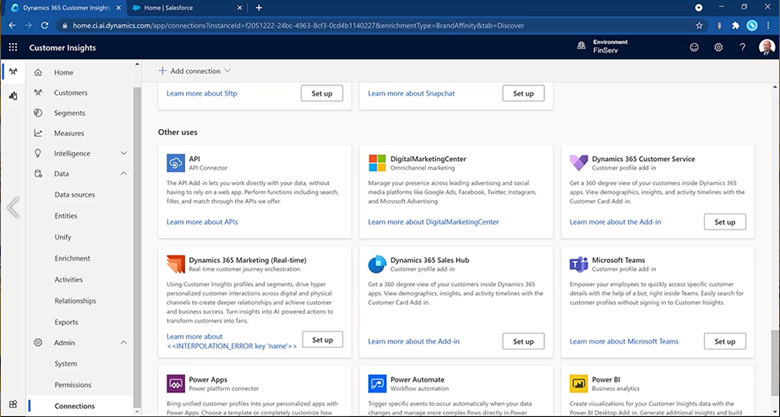
Let’s see how we can surface that data inside of Salesforce.
Once I’ve opened Salesforce, I’m going to go to my contacts. And here, I’m going to do a quick search for Patti who’s one of the advisors I’ll be visiting. As you can see, in her record, we’ve simply added a new tab that shows the combined profile of Patti.
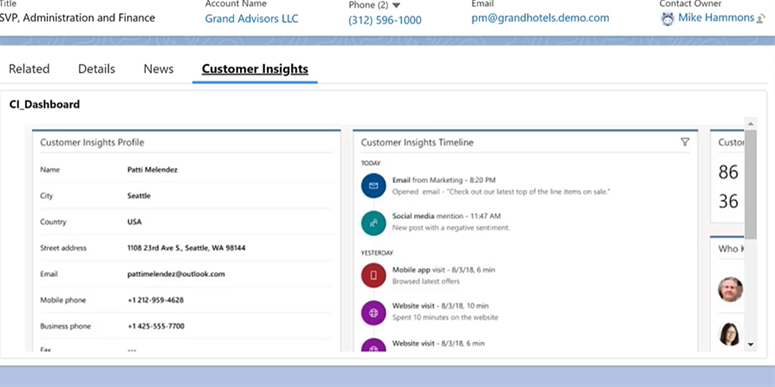
So, there is Customer Insights presented in Salesforce. Keep in mind that this profile includes data from multiple sources:
- transactions from other systems,
- data from marketing,
- external activities like our website and our portal,
- as well as key measures that we’ve created.
This data can also be made searchable inside of Salesforce so that we can build lists based off that unified data.
Customer Insights is a fantastic application to rapidly build unified customer profile and expose that information in applications we use every day.
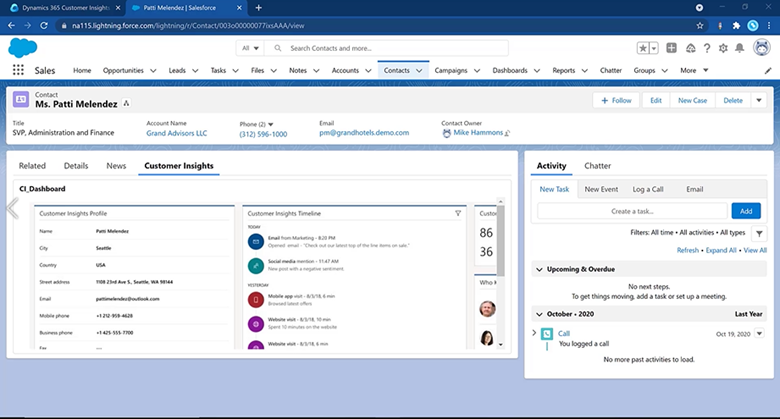
Learn more about how we support Financial Services companies
